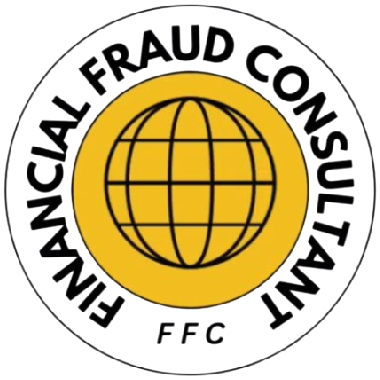
The decentralized and often unregulated nature of cryptocurrency, while offering freedom and innovation, also presents unique challenges when things go wrong. Discovering that your digital assets have suddenly vanished can be a jarring and deeply concerning experience. Whether it’s due to a suspected hack, a forgotten password, a platform issue, or something else entirely, knowing how to react swiftly and effectively is crucial.
This comprehensive guide will walk you through the immediate steps you should take if you find yourself in the unsettling situation of your crypto suddenly disappearing. While recovering lost crypto can be difficult, acting methodically can improve your chances of understanding what happened and potentially mitigating further losses.
I. Immediate Actions: The First Few Hours
The moments immediately following the discovery of lost crypto are critical. Your initial actions can significantly impact the outcome.
- 1. Stay Calm and Don’t Panic: While it’s natural to feel anxious and distressed, panicking can lead to hasty decisions. Take a deep breath and try to approach the situation methodically.
- 2. Verify the Loss: Before jumping to conclusions, double-check your balances across all wallets and exchange accounts. Sometimes, there might be a temporary display issue or a delay in synchronization. Log out and log back in, and check on different devices if possible.
- 3. Secure Your Remaining Assets: If you suspect a security breach, your immediate priority should be to secure any remaining crypto assets. This might involve:
- Transferring funds to a new, secure wallet or exchange account.
- Revoking API keys that might have been compromised.
- Changing passwords for all your crypto-related accounts (wallets, exchanges, email).
- Enabling or strengthening two-factor authentication (2FA) on all accounts.
- 4. Document Everything: Start meticulously documenting everything you observe. Take screenshots of your wallet balances before the loss, transaction history (or lack thereof), any error messages, and the exact time you noticed the discrepancy. This documentation will be crucial if you need to file reports or pursue any form of recovery.
II. Investigating the Cause: Understanding What Happened
Once you’ve secured your remaining assets, the next step is to try and understand how your crypto disappeared. The cause will dictate your subsequent actions.
- 1. Review Transaction History: Carefully examine the transaction history of the affected wallet or exchange account. Look for any unauthorized outgoing transactions. Note the addresses, amounts, and timestamps. Blockchain explorers (like Etherscan for Ethereum, Blockchair for multiple blockchains) can provide more detailed information about these transactions.
- 2. Check for Suspicious Activity: On exchange accounts, review your login history for any unrecognized devices or locations. Look for any unusual trading activity or withdrawal requests that you didn’t initiate.
- 3. Consider Common Scenarios: Think about potential ways your crypto could have been compromised:
- Hacks or Security Breaches: Exchanges and even individual wallets can be targets of cyberattacks. Check if the platform you were using has reported any recent security incidents.
- Phishing or Scams: Did you recently click on any suspicious links, enter your seed phrase on an unfamiliar website, or interact with anyone online who seemed untrustworthy? Phishing attacks are a common way for criminals to steal crypto.
- Malware: Malware on your computer or phone could have secretly recorded your keystrokes or accessed your wallet information. Run a thorough scan with reputable antivirus software.
- Forgotten or Lost Private Keys/Seed Phrases: While this doesn’t constitute a “sudden disappearance” in the same vein as theft, losing access to your private keys or seed phrase effectively means losing your crypto. If this is the case, recovery is often impossible unless you have a backup.
- Platform Issues or Errors: Although less common, technical glitches on exchanges or within wallet software could sometimes lead to temporary display errors or, in rare cases, actual loss of funds. Check the platform’s official communication channels for any announcements.
What Is Financial Transaction Card Fraud & Why It’s a Serious Crime
III. Reporting the Loss: Taking Formal Steps
Depending on the suspected cause of the loss, you might need to report it to various authorities and entities.
- 1. Report to the Exchange or Wallet Provider: If you suspect a platform-related issue or a potential hack of your account on an exchange, immediately report the incident to their support team. Provide them with all the documentation you’ve gathered. They might be able to investigate, freeze the affected account (if the crypto hasn’t already been moved), or provide information that could be helpful. Keep records of all communication with their support.
- 2. Consider Reporting to Law Enforcement: If you believe your crypto was stolen through a hack, scam, or other criminal activity, you might want to consider reporting it to your local law enforcement agency. While they might not have specific expertise in cryptocurrency, having an official police report can be useful for insurance claims (if applicable) or if the investigation expands. For larger losses or incidents involving online fraud, you might also consider reporting to specialized cybercrime units in your country (e.g., the FBI’s Internet Crime Complaint Center (IC3) in the US) [Federal Bureau of Investigation, “Internet Crime Complaint Center (IC3)”].
- 3. Report to Relevant Regulatory Bodies: Depending on your jurisdiction and the nature of the platform involved, you might also consider reporting the incident to financial regulatory bodies. While they may not directly recover your funds, such reports can contribute to broader oversight and potential action against fraudulent entities.
IV. Attempting Recovery: Exploring Limited Options
Recovering lost or stolen crypto is often challenging due to the irreversible nature of blockchain transactions. However, there are a few avenues you might explore, although their success rates can vary.
- 1. Cooperation with Exchanges: If your funds were lost due to a hack of an exchange, the exchange itself might be involved in trying to track and recover the stolen assets. Cooperate fully with their investigation and provide any information they request. Some exchanges have, in the past, managed to recover a portion of stolen funds.
- 2. Blockchain Analytics Firms: There are specialized blockchain analytics companies that can track the movement of cryptocurrency on the blockchain. If your crypto was moved to a public address, these firms might be able to help trace its journey, which could potentially assist law enforcement in their investigations [Chainalysis, “Blockchain Data Platform”]. However, these services often come at a cost, and tracking doesn’t guarantee recovery.
- 3. Legal Action (Limited Scope): In cases of fraud or scams where you can identify the perpetrators, you might consider pursuing legal action. However, this can be expensive and time-consuming, and the chances of recovering funds, especially if they’ve been moved across borders or converted into other assets, can be slim.
- 4. Recovery Scams: Be Extremely Cautious: Be wary of individuals or services that claim they can easily recover your lost crypto for a fee. Many of these are scams themselves, preying on the desperation of victims. Legitimate recovery efforts are usually complex and don’t involve guaranteed quick returns for an upfront payment.
V. Learning from the Loss: Prevention for the Future
While dealing with the aftermath of lost crypto is difficult, it’s also an opportunity to learn and improve your security practices to prevent future incidents.
- 1. Enhance Security Measures: Review and strengthen the security of all your crypto wallets and exchange accounts. Use strong, unique passwords, enable 2FA (preferably using a hardware security key), and be cautious about where you enter your private keys or seed phrases.
- 2. Use Hardware Wallets for Significant Holdings: For larger amounts of cryptocurrency, consider using a hardware wallet. These devices store your private keys offline, significantly reducing the risk of online attacks [Ledger, “Secure your crypto with Ledger hardware wallets”].
- 3. Be Skeptical of Online Interactions: Exercise extreme caution when interacting with others online regarding cryptocurrency. Be wary of unsolicited messages, promises of high returns, and requests for your private keys or seed phrases.
- 4. Stay Informed About Security Best Practices: The cryptocurrency space is constantly evolving, and so are the threats. Stay updated on the latest security best practices and common scam tactics.
Conclusion
Losing your digital assets suddenly is a distressing experience, but taking swift, informed action is crucial. By staying calm, verifying the loss, securing remaining assets, investigating the cause, and reporting the incident appropriately, you can navigate this challenging situation. While recovery can be difficult, understanding what happened and learning from the experience will be invaluable in protecting your digital assets in the future. Remember to be cautious of recovery scams and prioritize strengthening your security practices.




